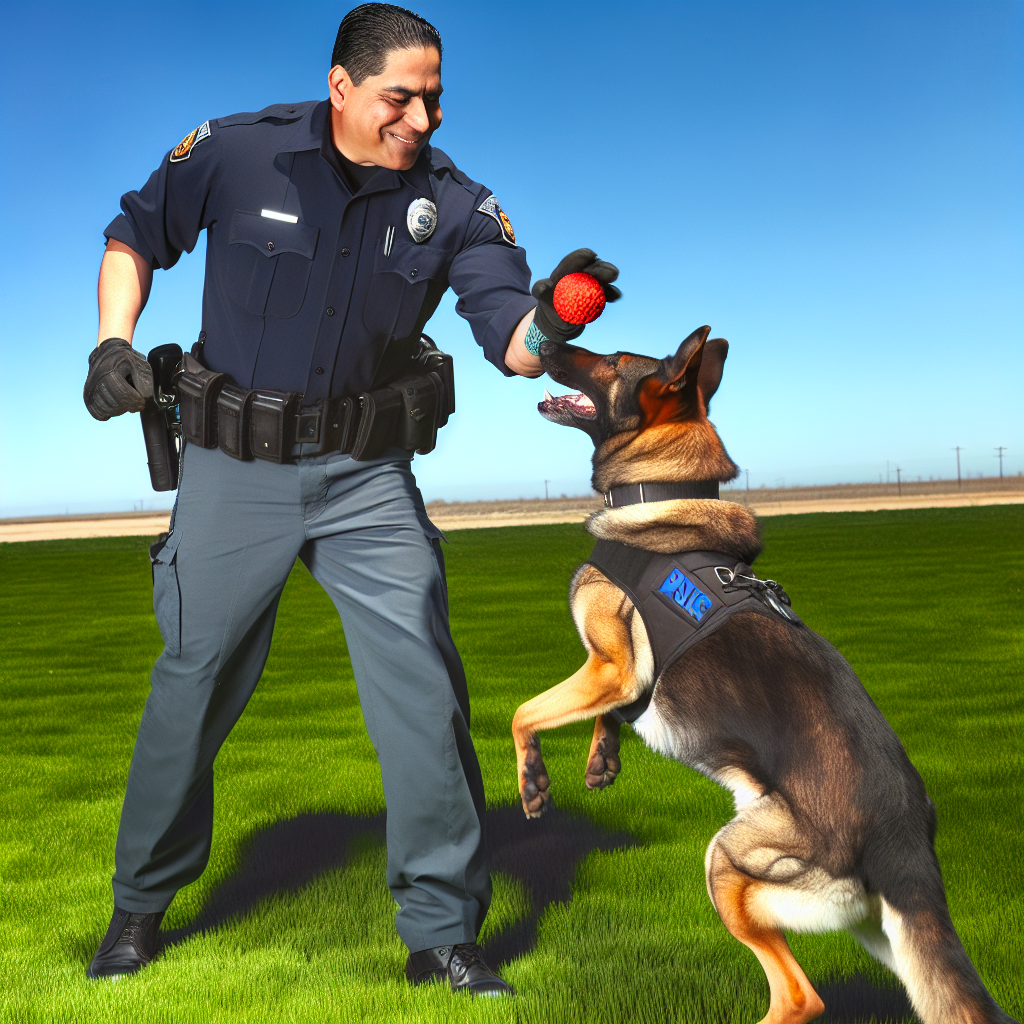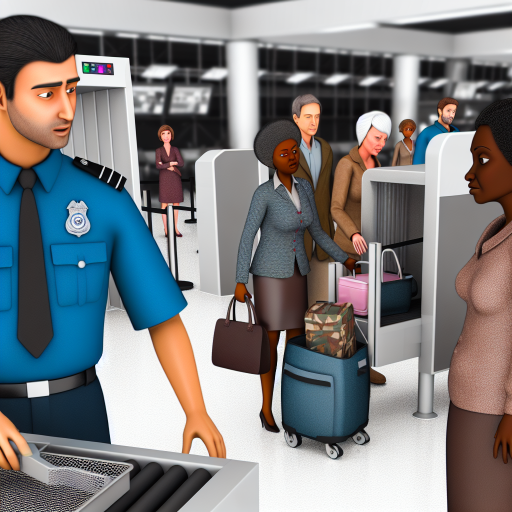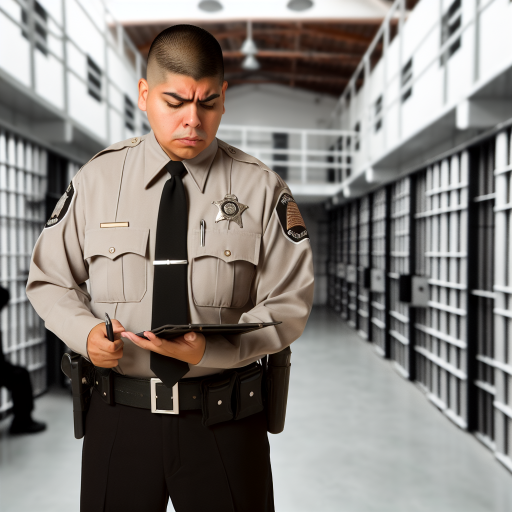Importance of K-9 Officer and Dog Bonds
K-9 officers and their dogs share a unique and special bond.
This relationship is crucial in law enforcement.
It is built on trust, loyalty, and teamwork.
This mutual respect makes them an effective crime-fighting duo.
The importance of this bond enhances safety and success in operations.
These highly trained dogs rely on their handlers for guidance, support, and protection.
In high-risk situations, this reliance becomes vital.
K-9 officers depend on their dogs’ keen senses and abilities.
This helps in tracking suspects and detecting illegal substances.
The relationship goes beyond mere partnership.
It thrives on mutual respect and cooperation.
Together, K-9 officers and their dogs form a formidable team.
This team works seamlessly to combat crime and protect communities.
Without this bond, law enforcement efforts would be greatly diminished.
Ultimately, this bond is a vital component of modern policing.
It ensures public safety across communities.
In the following sections, we will delve deeper into the dynamics of this special relationship.
History of K-9 Units:
Overview of the history of K-9 units in law enforcement.
How dogs were first used in police work.
Evolution of the role of K-9 officers in law enforcement.
Transform Your Career Today
Unlock a personalized career strategy that drives real results. Get tailored advice and a roadmap designed just for you.
Start NowThroughout history, dogs have been valued for their loyalty, intelligence, and keen senses.
It wasn’t until the late 19th century that they were officially utilized in law enforcement.
The first recorded use of dogs in police work dates back to the 1890s in Belgium, where bloodhounds were trained to help track criminals.
As the role of dogs in law enforcement grew, so did the responsibility of their handlers.
In the early 20th century, police departments saw the potential of specially trained dogs to assist in various tasks, such as search and rescue, drug detection, and apprehending suspects.
One of the most significant developments in the history of K-9 units was during World War I, where dogs were trained for military purposes and showed their ability to sniff out explosives and alert soldiers to danger.
This wartime experience laid the groundwork for the modern K-9 units we see today.
With the rise of organized crime and advancements in technology, the role of K-9 officers has become even more crucial in law enforcement.
Dogs are now trained to detect illegal substances like drugs and explosives, track missing persons, and apprehend suspects, making them invaluable assets to police departments around the world.
Today, K-9 units are an integral part of law enforcement agencies, with specially trained dogs and handlers working side by side to ensure the safety and security of their communities.
The bond between K-9 officers and their dogs is built on trust, respect, and a shared sense of purpose, making them an unstoppable team in the fight against crime.
Training and Selection Process:
When it comes to selecting K-9 officers, it is a meticulous process.
This involves assessing various factors to determine the suitability of both the dog and the handler.
The selection process typically starts with evaluating the dog’s characteristics.
These include drive, agility, and fearlessness.
Such traits are essential for a successful K-9 officer.
They often work in challenging and high-pressure situations.
Handlers are selected based on their experience, skills, and compatibility with the selected dog.
It is crucial to match the right handler with the right dog.
This helps to establish a strong and effective bond between them.
Transform Your Career Today
Unlock a personalized career strategy that drives real results. Get tailored advice and a roadmap designed just for you.
Start NowOnce the selection process is complete, the real work begins with the training phase.
Training is a critical component of the K-9 unit.
It prepares both the dogs and their handlers for their demanding roles.
The training process is extensive and covers a range of skills.
Skills include obedience, scent detection, tracking, and apprehension techniques.
Dogs are trained to respond to commands quickly and accurately.
Handlers learn how to effectively communicate with and control their K-9 partners.
Rigorous training is vital for the success of K-9 units.
This ensures that the dogs and handlers can work seamlessly together.
Training enhances the skills of the individual dog and handler.
It also strengthens their bond, trust, and communication.
This bond is crucial for the effectiveness and safety of the K-9 unit.
Through careful selection and rigorous training, K-9 units can perform their duties efficiently and effectively.
This showcases the strong bond between K-9 officers and their dogs.
- Selection Process: K-9 officers are carefully chosen based on their drive, temperament, and suitability for the job.
- Training Overview: Both dogs and their handlers undergo extensive training to develop their skills and bond.
- Importance of Rigorous Training: Rigorous training is crucial for successful K-9 units as it ensures effectiveness and safety.
Explore Further: Technological Advances in Forensic Science
Roles and Responsibilities:
When it comes to law enforcement, K-9 officers and their dogs play crucial roles in ensuring public safety.
These highly trained teams work together to tackle various tasks that are essential for the effective operation of police work.
Description of Roles:
- K-9 officers are responsible for handling and supervising the training of their canine partners.
- They utilize their dogs in tasks such as tracking criminals, detecting illegal substances, and searching for missing persons.
- K-9 units are often deployed in high-risk situations where their unique skills are needed to apprehend suspects or diffuse dangerous situations.
- These teams also provide support in crowd control, search and rescue operations, and evidence recovery at crime scenes.
Examples of Tasks:
- Tracking suspects who have fled the scene of a crime, using the dog’s keen sense of smell to follow their trail.
- Detecting narcotics or explosives in vehicles, buildings, or public spaces to prevent criminal activities.
- Locating missing persons, such as children or elderly individuals, by conducting search operations in various environments.
- Assisting in apprehending dangerous suspects by cornering them or alerting officers to their presence.
Enhancing Police Work and Public Safety:
- K-9 units play a vital role in enhancing law enforcement capabilities by providing unique skills and resources that human officers do not possess.
- These teams are able to cover large areas more quickly and efficiently than traditional officers, making them valuable assets during search and rescue missions.
- The presence of K-9 units can act as a deterrent to potential criminals, as their ability to detect hidden threats keeps law enforcement one step ahead.
- By working closely with their canine partners, K-9 officers develop strong bonds that create trust and communication crucial for successful operations.
The roles and responsibilities of K-9 officers and their dogs are essential for maintaining public safety and supporting effective police work.
These teams perform a wide range of tasks that contribute to the overall mission of law enforcement, demonstrating the importance of their partnership in serving and protecting their communities.
Uncover the Details: Becoming a Bodyguard: Essential Skills and Training
Transform Your Career Today
Unlock a personalized career strategy that drives real results. Get tailored advice and a roadmap designed just for you.
Start NowBenefits of the Bond
- Discussion on the unique bond between K-9 officers and their dogs
- How this bond enhances communication and teamwork
- Emotional support provided by the dogs to their handlers
One of the most significant benefits of the bond between K-9 officers and their dogs is the unique connection they share.
This bond goes beyond a typical human-animal relationship and is built on trust, loyalty, and mutual respect.
Communication and teamwork are crucial in the work of K-9 officers, and the bond they have with their dogs greatly enhances these aspects.
Through rigorous training and constant practice, K-9 officers and their dogs develop a seamless way of understanding each other.
This leads to effective collaboration in various tasks and missions.
Moreover, the emotional support provided by K-9 dogs to their handlers is invaluable.
The demanding nature of the job, often faced with high-pressure situations and difficult challenges, can take a toll on the mental and emotional well-being of K-9 officers.
In such times, the presence of their loyal canine partners offers comfort, companionship, and a sense of security.
The bond between K-9 officers and their dogs is not merely professional but also personal.
It is a relationship built on companionship, shared experiences, and a deep connection that extends beyond the boundaries of duty.
This bond serves as a source of strength and motivation for both parties, driving them to work together as an inseparable team.
Delve into the Subject: Advancing Your Career as a Public Safety Officer

Challenges Faced by K-9 Units:
- Explanation of the challenges that K-9 units encounter in their line of work
- Physical and emotional strain on both the dogs and their handlers
- Ways in which these challenges are overcome and managed
Physical Challenges:
K-9 units face physically demanding tasks such as running, jumping, and searching for long periods.
The dogs need to be in top physical condition to perform their duties effectively.
These challenges can lead to injuries for both the dogs and their handlers if not careful.
Emotional Challenges:
Working in high-stress environments can take a toll on the emotional well-being of both dogs and handlers.
Dogs can become anxious, aggressive, or depressed if exposed to traumatic situations repeatedly.
Transform Your Career Today
Unlock a personalized career strategy that drives real results. Get tailored advice and a roadmap designed just for you.
Start NowHandlers also experience emotional strain from the constant pressure of their work.
Overcoming Challenges:
Proper training and conditioning are crucial to prepare both dogs and handlers for the demanding tasks.
Regular breaks and downtime are essential to prevent burnout and keep the team motivated.
Building strong bonds between dogs and handlers helps them trust each other and work as a cohesive unit.
Support from supervisors and mental health professionals can offer tools to cope with the emotional challenges.
Managing Challenges:
Implementing a strict wellness program for the dogs to ensure they are healthy and fit for duty.
Providing access to mental health resources for handlers to address any emotional issues they may face.
Creating a supportive work environment where open communication and feedback are encouraged.
Routine evaluations and check-ins can help identify any potential issues before they become serious problems.
K-9 units encounter various challenges in their line of work, both physically and emotionally.
By overcoming and managing these challenges effectively, both dogs and handlers can work together seamlessly.
It is essential to prioritize the well-being of the entire team to ensure the success of K-9 units in their important roles.
See Related Content: Security Consultant Career Advancement Tips
Success Stories:
Highlighting some successful cases where K-9 units played a crucial role in law enforcement.
- In a recent drug bust, K-9 unit detected illegal substances hidden in a vehicle.
- A missing child was found safe and sound thanks to the quick search by a K-9 officer and their dog.
- During a hostage situation, K-9 unit helped apprehend the suspect, ensuring a peaceful resolution.
Examples of how K-9 officers and their dogs collaborated to solve crimes or save lives:
- Tracking down a fleeing suspect in a high-speed chase, leading to a safe arrest.
- Locating a lost Alzheimer’s patient in the woods using the keen sense of smell of the K-9 dog.
- Preventing a potential school shooting by sniffing out a weapon hidden in a student’s locker.
Recognition of the dedication and bravery of K-9 units:
- K-9 units undergo rigorous training to ensure they are prepared for any situation they may face.
- These officers and their dogs often work long hours, sacrificing personal time for the safety of others.
- The bond between a K-9 officer and their dog is unmatched, leading to effective teamwork and success.
The success stories of K-9 units highlight the invaluable role they play in law enforcement and the unique bond they share with their canine partners.
Bond Between K-9 Officers and Their Dogs
As we have explored the incredible bond between K-9 officers and their dogs, it is evident that this relationship is built on trust, loyalty, and mutual respect.
Transform Your Career Today
Unlock a personalized career strategy that drives real results. Get tailored advice and a roadmap designed just for you.
Start NowK-9 units play a crucial role in law enforcement, assisting in various tasks such as search and rescue operations, detecting explosives, drugs, and apprehending suspects.
It is essential to appreciate and support K-9 units in their work, recognizing the sacrifices and dedication of both the officers and their canine partners.
Ultimately, the success of K-9 units in keeping our communities safe depends on the strong bond they share, founded on trust and teamwork.
Let us continue to show our support and gratitude for these remarkable teams who work tirelessly to protect us, relying on the special bond they share.
Additional Resources
K-9s – A Law Enforcement Officer’s Equal Partner, Best Friend | USDA
[E-Books for Sale]
The Big Book of 500 High-Paying Jobs in America: Unlock Your Earning Potential
$19.99 • 500 High-Paying Jobs • 330 pages
Explore 500 high-paying jobs in America and learn how to boost your career, earn more, and achieve success!
See All 500 High-Paying Jobs of this E-Book
1001 Professions Without a Degree: High-Paying American Jobs You Can Start Now
$19.99 • 1001 Professions Without a Degree • 174 pages
Discover 1001 high-paying jobs without a degree! Unlock career tips, skills, and success strategies for just $19.99!




